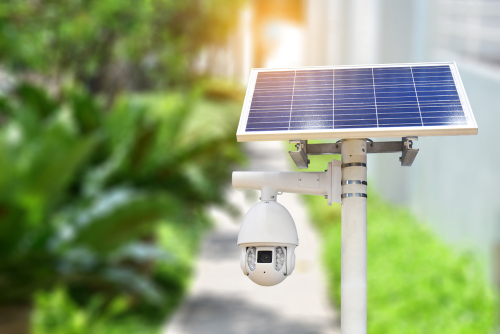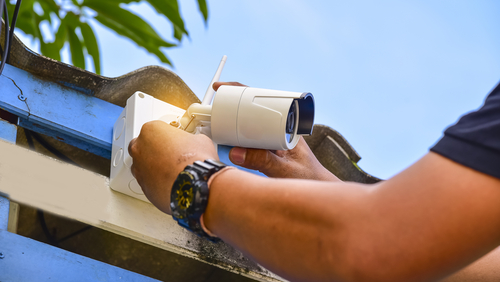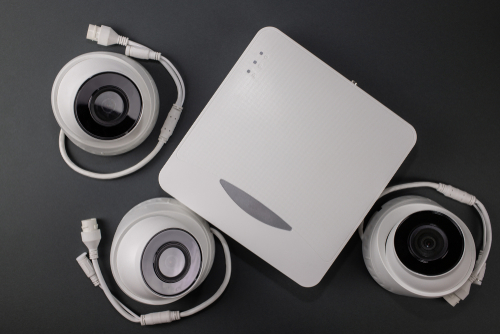
The Advantages of IP Cameras for Home Security
October 22, 2023
Tips for Installing IP Cameras at Your Business Premises
November 17, 2023CCTV in Art Galleries: Protecting Cultural Treasures
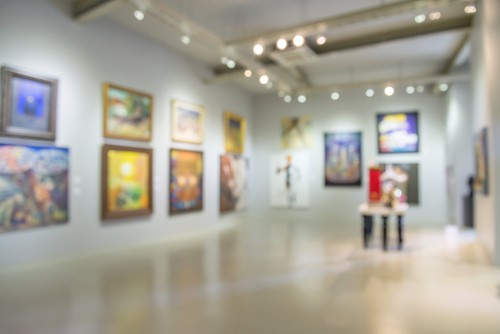
CCTV in Art Galleries Protecting Cultural Treasures
CCTV in Art Galleries: Protecting Cultural Treasures. Art galleries, as custodians of invaluable cultural treasures, face the critical task of safeguarding these assets.
The integration of CCTV (Closed-Circuit Television) in these spaces has emerged as a critical solution, offering advanced surveillance capabilities to protect and preserve artworks from theft, vandalism, and environmental threats.
The Role of CCTV in Art Preservation
An Introduction to the Use of CCTV Cameras in Safeguarding Artworks
By providing real-time surveillance, CCTV technology plays a vital role in protecting artworks.
These systems continuously monitor gallery spaces, offering a deterrent against illicit activities and capturing crucial footage for security purposes.
Preserving Artistic Heritage
Artworks are more than just aesthetic objects; they embody historical and cultural significance.
CCTV assists in preserving this heritage by ensuring that these pieces are protected from potential damage, thereby maintaining their integrity for future generations.
CCTV Systems in Art Galleries
Understanding CCTV Technology
CCTV systems in art galleries encompass a range of technologies, from basic video surveillance to advanced techniques featuring high-definition imaging, motion sensors, and night vision capabilities.
These technologies work together to provide comprehensive coverage of gallery spaces.
Benefits of CCTV for Art Protection
CCTV systems offer numerous benefits, including deterring theft and vandalism, aiding in incident investigations, and contributing to the overall security and management of gallery spaces.
They also assist in monitoring environmental conditions around sensitive artworks.
Types of CCTV Cameras Used in Galleries
Different types of CCTV cameras, such as dome, bullet, and PTZ (Pan, Tilt, Zoom) cameras, are used in galleries, each serving specific surveillance needs.
Dome cameras are discreet, bullet cameras provide long-range coverage, and PTZ cameras offer flexibility in monitoring large areas and focusing on specific details.
Art Gallery Security
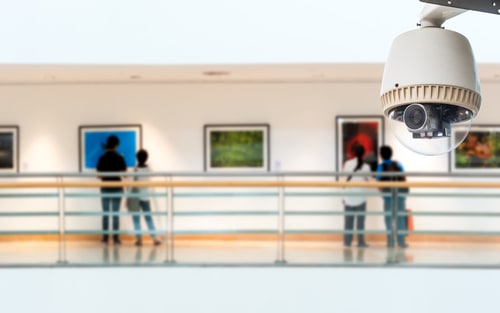
Security Challenges in Art Galleries
Galleries face unique security challenges, including the protection of high-value items in accessible public spaces and the need to balance openness with security.
These challenges necessitate the use of sophisticated surveillance systems like CCTV.
The Role of CCTV in Gallery Security
CCTV systems are fundamental to gallery security, providing a continuous and vigilant watch over artworks.
They complement other security measures, such as physical guards and alarm systems, forming a comprehensive security strategy.
Integration with Existing Security Systems
CCTV systems are often integrated with other security measures, including intrusion detection, access control, and fire safety systems.
This integration enhances the overall effectiveness of the security infrastructure within the gallery.
Surveillance and Theft Prevention
24/7 Surveillance of Artworks
Continuous surveillance offered by CCTV systems ensures that artworks are monitored at all times, significantly reducing the risk of theft and enabling prompt response to security incidents.
Preventing Art Theft
CCTV acts as a major deterrent to potential art thieves. The presence of cameras, coupled with the possibility of being recorded, discourages theft and helps identify and apprehend perpetrators.
Advanced Features for Theft Prevention
Modern CCTV systems in galleries incorporate advanced features like motion detection and facial recognition, further enhancing their capability to prevent theft and protect artworks.
Art Preservation
Protecting Art from Environmental Factors
CCTV systems also assist in monitoring the environmental conditions surrounding artworks.
Changes in temperature, humidity, or light can be detrimental to art, and CCTV can help in detecting these changes promptly.
Detecting Unauthorized Handling
CCTV cameras help identify any unauthorized handling or tampering with artworks. This is especially important in protecting paintings from accidental damage or intentional harm.
Integration with Climate Control Systems
CCTV systems can be integrated with climate control systems to ensure optimal conditions for art preservation.
This integration allows for a proactive approach to maintaining the right environment for sensitive artworks.
Visitor Experience
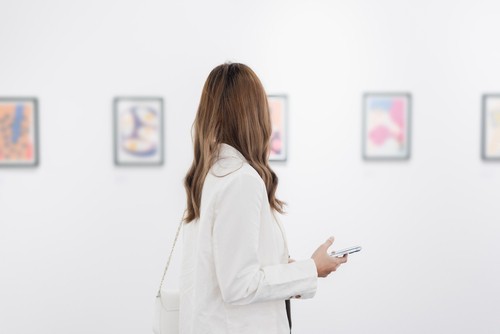
Enhancing the Visitor Experience
CCTV technology can be used for security and enhance the visitor experience.
It can provide insights into visitor behavior, helping to optimize gallery layout and exhibit placement for a more engaging experience.
Balancing Security and Visitor Engagement
Balancing effective security measures with a positive visitor experience is crucial.
CCTV systems should be strategically placed to be non-intrusive yet effective, ensuring that security does not overshadow the aesthetic and educational aspects of the gallery.
Interactive Art Gallery Tours
CCTV technology can also enable innovative visitor experiences such as interactive tours, allowing remote access and engagement with the gallery’s offerings, broadening the reach and accessibility of the art world.
Ethical and Privacy Considerations
Balancing Art Protection and Privacy
While CCTV is essential for protecting artworks, it is also important to consider visitors’ privacy.
Galleries must navigate this balance by implementing CCTV in a way that respects visitor privacy and complies with legal standards.
Legal and Ethical Framework for CCTV Use
CCTV in art galleries is governed by legal and ethical frameworks that ensure responsible surveillance.
Understanding and adhering to these regulations is essential for maintaining ethical surveillance practices.
Data Protection and Storage
Responsible handling and storage of CCTV data are paramount. Galleries must implement secure data storage solutions and adhere to data protection laws, ensuring surveillance data is used appropriately and ethically.
FAQ
What are the key features to look for in CCTV systems for art galleries?
When selecting CCTV systems for art galleries, prioritize high-resolution imaging, motion detection, night vision, and discreet design.
Consider the gallery’s specific needs, including the size of the space and the types of artworks displayed.
How can CCTV cameras be discreetly integrated into gallery spaces?
Consider camouflaged designs or small, hidden models to integrate CCTV cameras discreetly.
Placement should be strategic, ensuring coverage without disrupting the aesthetic appeal of the gallery space.
Are there alternatives to CCTV for protecting artworks in galleries?
While CCTV is a primary security tool, alternatives include trained personnel, alarm systems, and access control measures. These can be used in conjunction with CCTV to provide layered security.
What are the considerations for balancing security with art accessibility in galleries?
Balancing security and accessibility involves ensuring that security measures do not impede the enjoyment and accessibility of artworks.
This can be achieved by using less intrusive security technologies and designing gallery layouts that facilitate both security and visitor engagement.
How can art galleries ensure the responsible and ethical use of CCTV data?
Galleries should adhere to data protection regulations, implement strict data access policies, and be transparent about CCTV usage.
Regular audits and adherence to ethical guidelines are also crucial for responsible CCTV data management.
CCTV in Art Galleries: Protecting Cultural Treasures – Conclusion
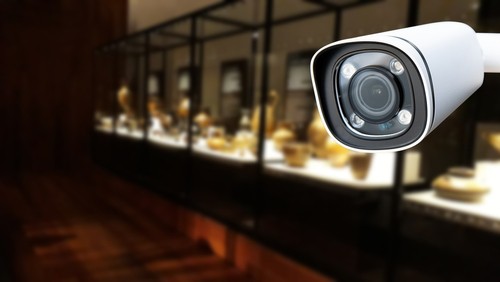
In conclusion, CCTV technology safeguards cultural treasures within art galleries.
Providing advanced surveillance capabilities helps protect artworks from various threats while enhancing the visitor experience and maintaining ethical standards.
The thoughtful implementation of CCTV and adherence to legal and ethical considerations ensure that artworks are preserved and accessible for future generations to appreciate and enjoy.
Are you seeking a professional and reliable CCTV installation or supplier in Singapore? Contact us today!

